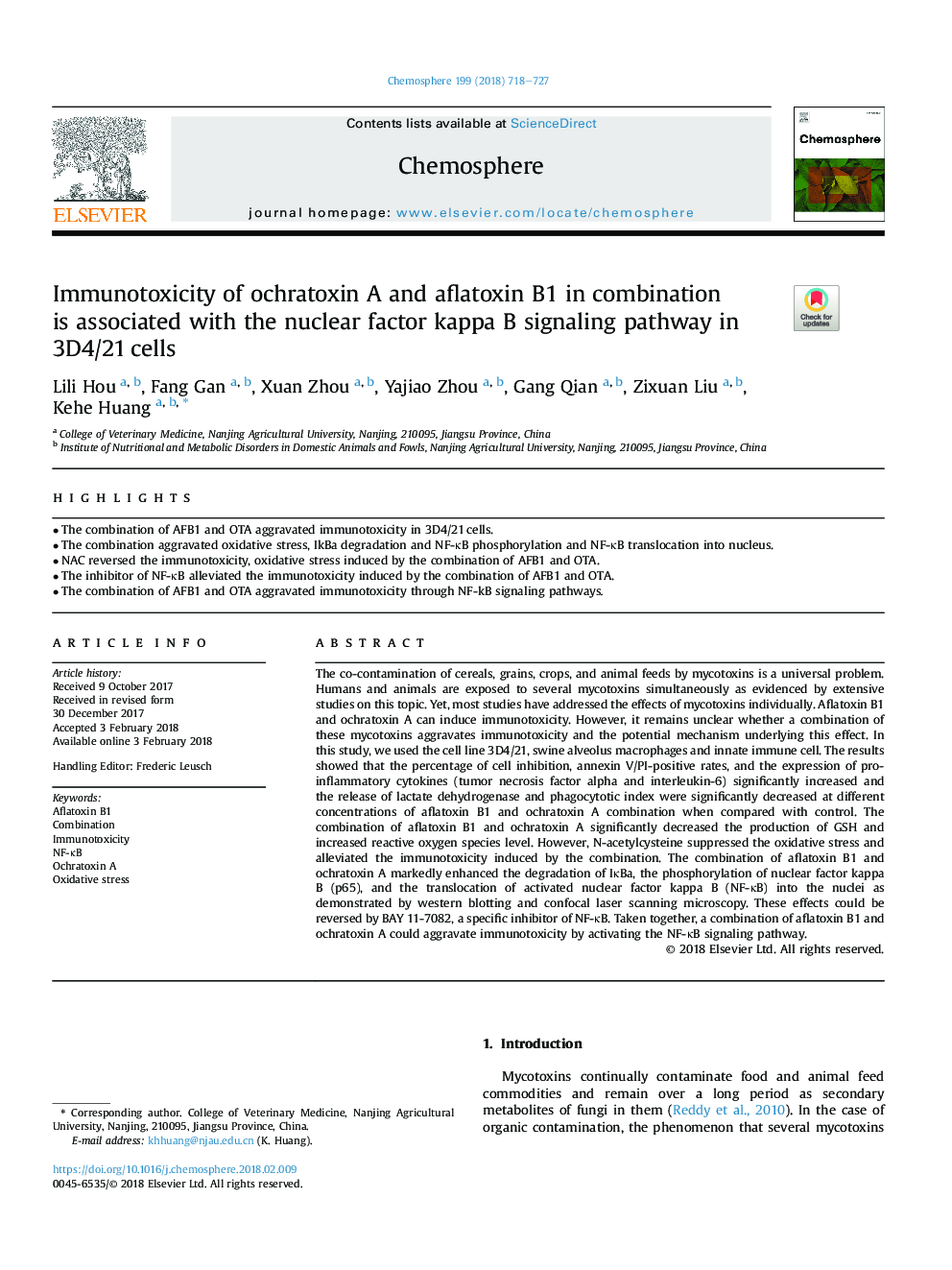| Article ID | Journal | Published Year | Pages | File Type |
|---|---|---|---|---|
| 8851811 | Chemosphere | 2018 | 10 Pages |
Abstract
The co-contamination of cereals, grains, crops, and animal feeds by mycotoxins is a universal problem. Humans and animals are exposed to several mycotoxins simultaneously as evidenced by extensive studies on this topic. Yet, most studies have addressed the effects of mycotoxins individually. Aflatoxin B1 and ochratoxin A can induce immunotoxicity. However, it remains unclear whether a combination of these mycotoxins aggravates immunotoxicity and the potential mechanism underlying this effect. In this study, we used the cell line 3D4/21, swine alveolus macrophages and innate immune cell. The results showed that the percentage of cell inhibition, annexin V/PI-positive rates, and the expression of pro-inflammatory cytokines (tumor necrosis factor alpha and interleukin-6) significantly increased and the release of lactate dehydrogenase and phagocytotic index were significantly decreased at different concentrations of aflatoxin B1 and ochratoxin A combination when compared with control. The combination of aflatoxin B1 and ochratoxin A significantly decreased the production of GSH and increased reactive oxygen species level. However, N-acetylcysteine suppressed the oxidative stress and alleviated the immunotoxicity induced by the combination. The combination of aflatoxin B1 and ochratoxin A markedly enhanced the degradation of IκBa, the phosphorylation of nuclear factor kappa B (p65), and the translocation of activated nuclear factor kappa B (NF-κB) into the nuclei as demonstrated by western blotting and confocal laser scanning microscopy. These effects could be reversed by BAY 11-7082, a specific inhibitor of NF-κB. Taken together, a combination of aflatoxin B1 and ochratoxin A could aggravate immunotoxicity by activating the NF-κB signaling pathway.
Related Topics
Life Sciences
Environmental Science
Environmental Chemistry
Authors
Lili Hou, Fang Gan, Xuan Zhou, Yajiao Zhou, Gang Qian, Zixuan Liu, Kehe Huang,
